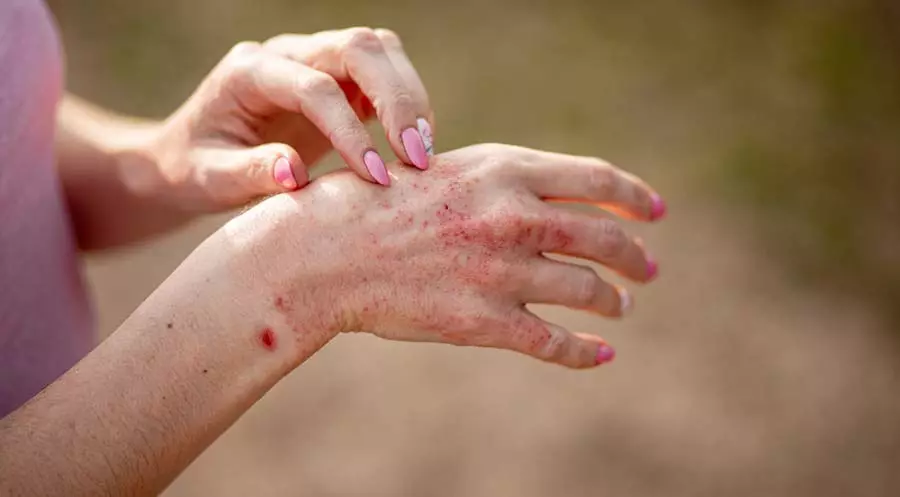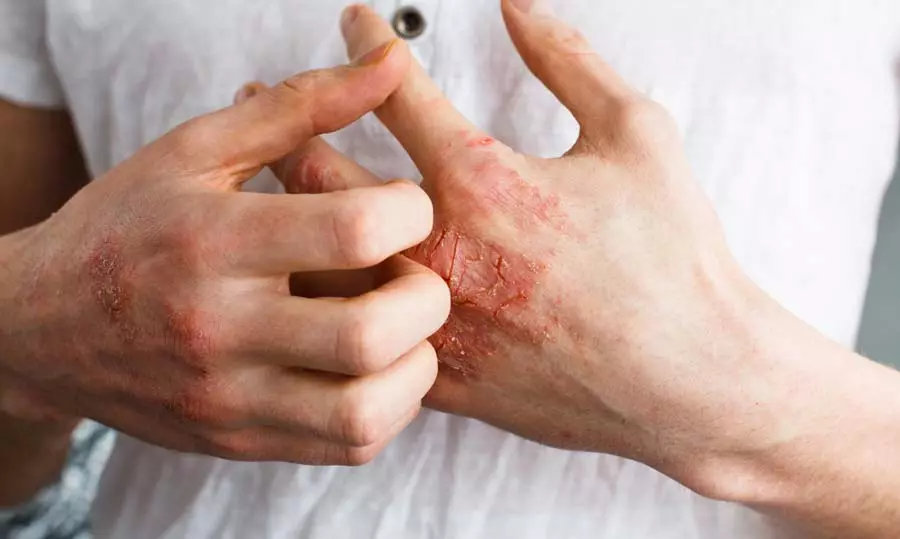The Facts Behind Meth Mites and Meth Sores
Methamphetamine, commonly known as meth or crystal meth, is a highly addictive and dangerous drug that has taken a devastating toll on communities across the world. While the effects of meth on an individual’s health and well-being are well documented, some people are unaware of one of the side effects of meth – meth mites.
Keep reading to learn more about meth addiction, the facts behind meth mites and meth sores, and what Catalina Behavioral Health can do to help you or a loved one struggling with meth addiction!
Get Help For Meth Abuse – Reach Out Now!
The Effects of Meth Addiction
Meth is a powerful stimulant that can have serious and devastating consequences on a person’s health and have a significant health impact on a person’s body. Chronic use of meth can lead to a wide range of health issues, including cardiovascular damage, significant weight loss, kidney and liver damage, dental problems, increased body temperature, and an increased risk of stroke and heart attack, in addition to the very real possibility of overdose on meth.
Additionally, drug abuse can lead to serious mental health problems, such as anxiety, depression, and psychosis in otherwise healthy individuals.
In addition to its physical and psychological effects, meth use and stimulant abuse of other drugs can also cause a number of disturbing hallucinations, including the infamous “meth bugs.”
Other common effects of meth include the following:
Meth Mouth
Meth mouth is a term used to describe the severe dental problems that can develop as a result of meth abuse. Meth users often have poor oral hygiene and may grind their teeth or have dry mouths, which can lead to cavities, gum disease, and tooth loss.
Poor Hygiene
Meth users may neglect personal hygiene and may not take the time to clean themselves or their living spaces. This can lead to the buildup of dirt, grease, and bacteria on the skin, hair, and clothing, which can cause a range of skin and health problems, including skin infections, loss of hair and damage to hair health, skin sores, and a weakened immune system.
Contagious Disease
Meth abuse can increase the risk of contracting contagious diseases, such as HIV, hepatitis B and C, and other sexually transmitted infections. Drug users may engage in high-risk behaviors, such as unprotected sex and sharing needles, which can increase their risk of contracting these diseases.
Sleep Deprivation
Meth users may experience sleep deprivation as a result of the drug’s effects on the brain and the body. Meth can increase alertness and energy levels, making it difficult for users to fall asleep and stay asleep. This can lead to chronic sleep deprivation, which can have serious consequences for overall health and well-being.
Weakened Immune Systems
Meth abuse can cause long-term damage to the immune system, making it more difficult for the body to fight off infections and illnesses. This can lead to an increased risk of serious health problems, such as respiratory infections, skin infections, and other serious illnesses.
The effects of meth drug abuse go beyond just physical and mental health, however. Meth abuse can also have a devastating impact on an individual’s relationships, finances, and overall quality of life. Meth addiction can lead to job loss, financial problems, and homelessness, as well as strained or broken relationships with family and friends. Ultimately, meth use can be life-threatening.
What Are Meth Mites and Meth Bugs?

Meth mites, also known as meth bugs, ice mites, and crank bugs, are a condition that is experienced by some individuals who have been using meth for an extended period of time.
The condition is characterized by a feeling of crawling, biting, or stinging sensations on the skin, often accompanied by an intense urge to scratch. While the sensations are not caused by anything in or under the skin, they can be extremely distressing and can make it difficult for individuals to function in their daily lives. Meth mites are essentially imaginary bugs crawling underneath a meth user’s skin, causing intense itching. Users may believe they need medical treatment to get rid of the imaginary bugs underneath their skin.
Meth mites are thought to be a side effect of the intense anxiety and paranoia that is often associated with meth use. The condition can persist for days, weeks, or even months after an individual has stopped using meth, making it a formidable barrier to recovery.
These types of hallucinations and what is known as meth-induced psychosis can lead to serious physical and psychological harm if not treated properly. Meth users may become violent due to fear of these false perceptions and may resort to self-harm out of desperation or feelings of paranoia. This makes it essential for those struggling with an addiction to seek help right away before it is too late.
When Do Meth Bugs and Meth Mites Occur?
Meth psychosis and meth mites happen when you smoke crystal meth, or if you snort or inject it. These hallucinations are thought to be a result of the drug’s impact on the brain and central nervous system and its ability to alter perceptions and create false sensations. They can occur both during the use of meth and during the withdrawal period when an individual is trying to quit the drug.
The severity and duration of meth bugs and meth mites can vary greatly depending on the individual, the amount of meth used, and the length of time the individual has been using the drug. For some individuals, these hallucinations may only last for a short period of time, while for others they can persist for days or even weeks.
What are the Causes of Crystal Meth Mites?

The exact cause of meth mites is not fully understood, but it is believed to be related to changes in the brain caused by methamphetamine use. Methamphetamine is a powerful stimulant that affects the release of neurotransmitters, including dopamine and serotonin, in the brain. This can lead to changes in brain chemistry and can result in symptoms like meth bugs and mites.
Methamphetamine use can also cause damage to the brain, which can contribute to the development of this type of hallucination. Additionally, long-term meth use can lead to a state of chronic psychosis, which is characterized by hallucinations, delusions, and disordered thinking. This can further exacerbate the symptoms of meth mites or crank bugs.
How Do Meth Users Treat Meth Mites?
Get Substance Abuse Treatment Options Now!
Treatment for meth mites typically involves addressing the underlying methamphetamine use. This involves seeking professional help, including addiction treatment, and behavioral therapies.
Medications such as antipsychotics and antidepressants can be helpful in managing symptoms of meth mites. Antipsychotics can help to reduce the severity of hallucinations, while antidepressants can help to improve mood and reduce anxiety, making it easier for someone to stay away from using meth.
What Are Meth Sores?

Meth sores are a common side effect of methamphetamine use. These pus-filled sores can form on the skin, chest, arms, face, and lips as a result of long-term use of the drug.
Meth sores are open wounds or ulcers that are caused by scratching or picking at the skin due to the drug’s intense itching and crawling sensations. Meth users often experience these sensations as a side effect of the drug, and they may be unable to resist the urge to scratch or pick at their skin, leading to the formation of meth sores. These sores can become infected, leading to further complications and health problems.
Meth sores can also occur at the site of injection when a person continuously injects the drug into their body.
The effects of meth sores can be quite extreme and range from irritations to minor infections and a worsening infection that requires medical attention, especially if the infection spreads. These meth sores often appear as red bumps or lesions and unhealthy skin that may become infected if not treated properly. Canker sores and cold sores are also common in methamphetamine addiction.
Often, a person with meth sores treats them like they’re not a big deal, and this can cause serious health risks.
Meth Sores Treatment
The first step in treating meth sores is to stop using the drug. This can help to reduce the risk of further sores and prevent the development of new ones. In addition, it is important to maintain good hygiene practices, such as keeping the affected area clean and dry and avoiding contact with others who have open wounds or meth sores.
In some cases, the meth sores may become infected and require medical treatment. Antibiotics may be prescribed to help fight infection, and in severe cases, surgery may be necessary to remove the infected tissue.
Up to 100% of Costs Covered by Insurance – Call Now!
Get Help with Methamphetamine Abuse Now
Catalina Behavioral Health is a leading provider of addiction treatment and behavioral health services. Our team of experts includes licensed therapists, counselors, and medical professionals who specialize in helping individuals overcome addiction and achieve lasting recovery.
Our facility offers a comprehensive range of treatment options for substance abuse, including meth detox, inpatient and outpatient treatment, and aftercare planning, including support groups.
If you or your family members are struggling with methamphetamine addiction, it is important to seek help as soon as possible. Contact Catalina Behavioral Health today to get started on your recovery process and the road to a healthy lifestyle.
All phone calls to our facility are confidential, so please reach out in confidence today and get options for lasting recovery from meth!




